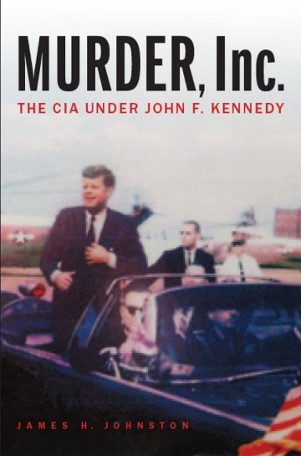My earlier installments on the files from the National Archives of Mexico
prompted me to take a second look at Vincent T. Lee and Gilberto Policarpo
Lopez.
Several
articles on Vincent Lee in the Tampa Times caught my eye. He got his start in Tampa, where Ybor
City, started around 1890 by a cigar
manufacturer, was the center of a vibrant Cuban community. In the immediate aftermath
of the assassination, an article in the November 26, 1963 edition of the paper said “in 1959 it was no secret that
Castro was a popular figure among Latins and Anglos.” But after Castro took power, tensions between
pro and anti-Castro forces started building. Lee took the lead with pro-Castro
elements. He founded the Tampa
chapter of the Fair Play for Cuba Committee, drawing 250 people to its first
meeting in early 1961. He rose quickly
to become head of the national FPCC in New York.
In December 27, 1963, the Tampa
paper reported that Lee had resigned from the FPCC. It added, without
referencing its source, that the committee was “financed originally by the
Castro Cuban delegation to the United Nations.”
In Murder, Inc., I point out that the FPCC and several other, left-wing
organizations that Lee Harvey Oswald corresponded with were located in a small
section of Greenwich Village in New
York and were certainly accessible to the Cuban
delegation at the UN. I also noted that
when the FBI broke into the FPCC’s New York
headquarters, it acquired the Committee’s foreign mailing list, which included Fidel
Castro himself in Havana.
There is
nothing in the Tampa paper about
Gilberto Lopez, nor would one expect there would be. He had only moved there in
June 1963. Before that, he had lived and
worked in Key West. The FBI investigation of him found that the
men he knew in Key West were
anti-Castro whereas Lopez seemed pro-Castro. Perhaps he moved to Tampa
to find a more congenial political atmosphere.
John
Kennedy visited Tampa on Monday, November 18, 1963. It was a rather brief visit with the usual
focus on politics. Thus, he spoke to a
crowd at the baseball stadium, then to the Chamber of Commerce, and finally to
a union gathering.
What was
unusual about the visit, however, was that he spent almost an equal amount of
time at a military facility, MacDill Air Force Base. Kennedy rarely wasted time
on military bases. His charisma paid far better dividends when he was exposed
to civilian crowds. But MacDill was headquarters of the U.S. Strike Command. Its quick reaction forces might be needed if
the CIA pulled off its planned coup in Cuba. During the Cuban Missile Crisis, Kennedy was
surprised to learn that the military didn’t have a quick reaction force. He was told it would take eighteen days to
have a force large enough to go into Cuba. So the visit to MacDill seemed designed for Kennedy to see how much progress had been made and whether it was ready to go to Cuba if needed.
The White
House had been worried about demonstrations by pro and anti- Castro elements in
Tampa, but Kennedy’s visit went off
without a hitch. FBI agent Moses Aleman, who would later do the investigation
into Lopez’s activities, and
his fellow agents received commendations from FBI Director J. Edgar Hoover for
their work in providing security for Kennedy’s visit.
However, in
the same November 26, 1963,
edition of the Tampa Times that carried the story on Lee, there was a second
article reporting a rumor that Lee Harvey Oswald had been in Tampa
during Kennedy’s visit. The article quoted the chief of police saying the rumor
wasn’t true, and of course it wasn’t. Besides,
ominous, pre-assassination sightings of Oswald were as common as those of
Bigfoot. Nonetheless, one wonders if the rumor was based on a grain of truth
that it was Lopez who was up to no good. I am sorry that I didn’t know about this newspaper
article in my conversations with Moses Aleman.
But then I doubt that he heard or remembered any such rumor or else he
would have volunteered it in our discussions.
The point is the same that I make in Murder, Inc. With few exceptions, the investigation of Kennedy's assassination veered away from leads suggesting a foreign conspiracy.


